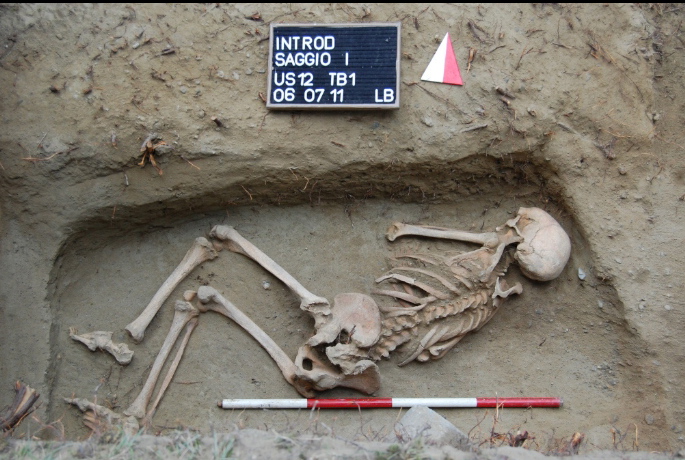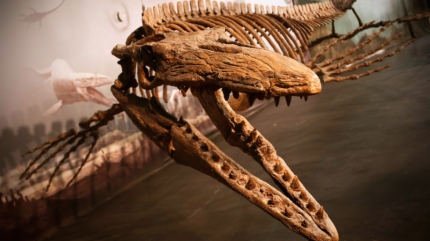
© Comune di IntrodThe "Lady of Introd" has been lying on her right side for about 5,000 years.
Italian workers building an addition to a kindergarten have unearthed a well preserved female skeleton who might be relatively contemporaneous with Ötzi, the Iceman mummy discovered 20 years ago in a melting glacier in South Tyrol.
The "Lady of Introd" or "Ötzi's girlfriend," as the skeleton was nicknamed in Italy, was found in the tiny Alpine village of Introd, in the Val d'Aosta, famous to be the preferred vacationing spot for both Pope John II and his successor Benedict XVI.
According to archaeologists and anthropologists, the woman has been lying on her right side, with her head facing west, for about 5,000 years.
The dating to the third millennium B.C. was based on the skeleton's burial position and stratigraphy, said Vittorio Anglesio, mayor of Introd.
"She appears to have been buried without any grave goods. However, we are now going to extend the dig to better investigate the area," Anglesio told Discovery News.

Comment: It seems like our ancestors knew a thing or two about proper nourishment. And we are not talking about a mere survival and preservation of body's heat during harsh periods. It appears that fat is the preferred fuel of human metabolism and has been for most of human evolution. It not only decreases inflammation and significantly increases energy levels, but improved and healthier brain activity facilitates creativity and human evolution.
Read the following articles to understand how currently promoted low-fat diets lead to slow degradation and danger, especially prior to the possible onset of the next Ice Age.
You've Been Living A Lie: The Story Of Saturated Fat And Cholesterol
A Metabolic Paradigm Shift, or Why Fat is the Preferred Fuel for Human Metabolism
Your Brain On Ketones: How a High-fat Diet Can Help the Brain Work Better